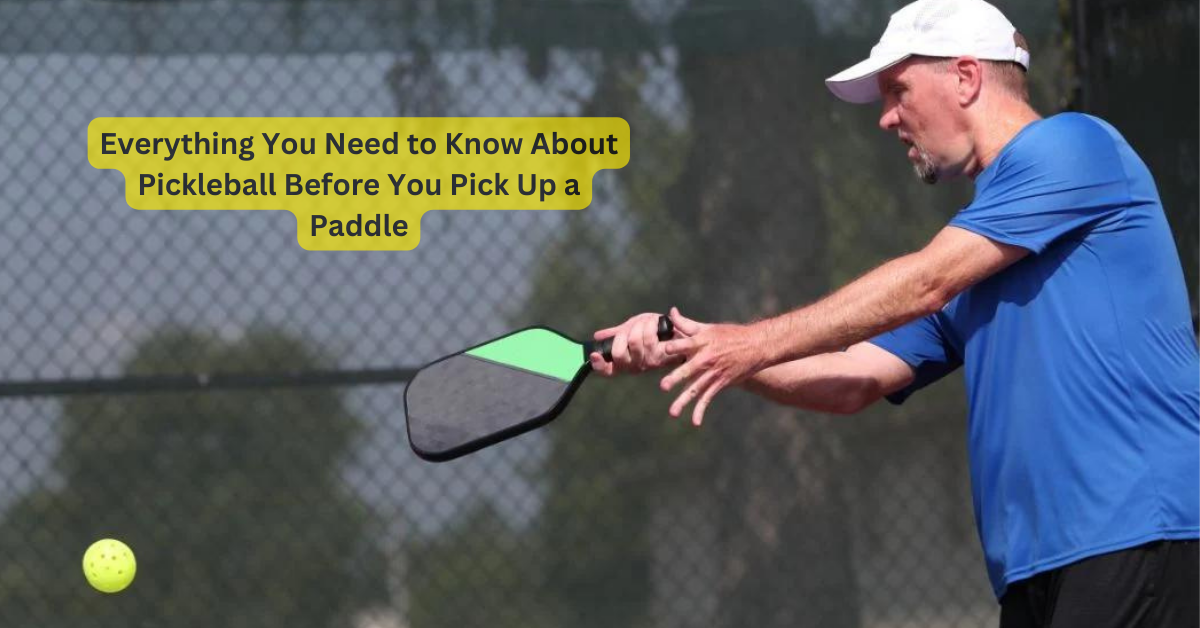Players all over the world have fallen in love with Pickleball, a fast-paced and thrilling sport that mixes aspects of table tennis, badminton, and tennis. Pickleball basics are crucial to comprehend, whether you’re a beginner or an experienced player trying to improve. From the game’s history and regulations to its gear and tactics, we’ll cover all you need to know about Pickleball in this in-depth guide so you can enter the court with confidence.
1. Pickleball Origins and History
Joel Pritchard, Bill Bell, and Barney McCallum, three buddies, created Pickleball in the middle of the 1960s. Pickles, a dog owned by the Pritchard family, is credited with giving the game its name because he would run after stray balls during its early games.
2. Pickleball Equipment
- Paddle: Pickleball paddles are composed of solid materials like wood, composite, or graphite and are normally solid. Pick a paddle that matches you’re playing style and degree of expertise.
- Pickleball: The ball has holes like a wiffle ball and is made to bounce well on the court’s surface.
- Net: Similar to a tennis net, the net is placed in the middle of the court.
3. Pickleball Court Dimensions
A typical Pickleball court has zones for serving, non-volley (kitchen) play, and the sections reserved for singles and doubles play. It is 44 feet long and 20 feet wide.
4. Pickleball Rules and Scoring
• Points are counted on both the serving and receiving sides of the ball in accordance with rally scoring.
• Players must serve diagonally, get the ball inside their opponent’s service court, and clear the non-volley zone (kitchen).
• Players are prohibited from volleying (hitting the ball in the air before it bounces) in the non-volley zone, also known as the kitchen.
5. Basic Techniques and Shots
- Serve: Each rally begins with a serve, which is delivered diagonally from behind the baseline.
- Dink: a gentle, well-placed shot, frequently employed for exact placement that lands in the kitchen.
- Volley: A common move near the net involves hitting the ball in the air before it rebounds.
- Lob: a long, arcing shot that is intended to reset the rally or surprise the opposition.
6. Strategy and Game Play
Pickleball strategy combines offensive and defensive tactics, court positioning, and cooperation while playing in doubles. Depending on your degree of expertise and playing style, strategies might change.
7. Getting Started
• To master correct tactics and strategies, enroll in Pickleball classes with a professional instructor.
• To enhance your game, practice against opponents with different skill levels.
• Play in local leagues or tournaments to develop experience and have fun.
8. Pickleball Communities
Joining a Pickleball community or club may improve your playing experience by offering chances for interaction with other players, supervised play, and instruction from more seasoned players.
9. Stay Safe and Hydrated
To avoid injuries, always warm up before playing, drink enough of water throughout games, and wear the appropriate court shoes.
10. Enjoy the Game
Above importantly, keep in mind that the point of Pickleball is to have fun and be active. The enjoyment of Pickleball is found in the friendship, the thrill of the game, and the pleasure of developing your abilities, whether you play for fun or in competition.
With your knowledge of the fundamentals in hand, pick up a paddle, walk to the court, and eagerly and confidently begin your Pickleball journey. The world of Pickleball is waiting for you, providing numerous hours of fun and the chance to interact with an active and friendly player base.

